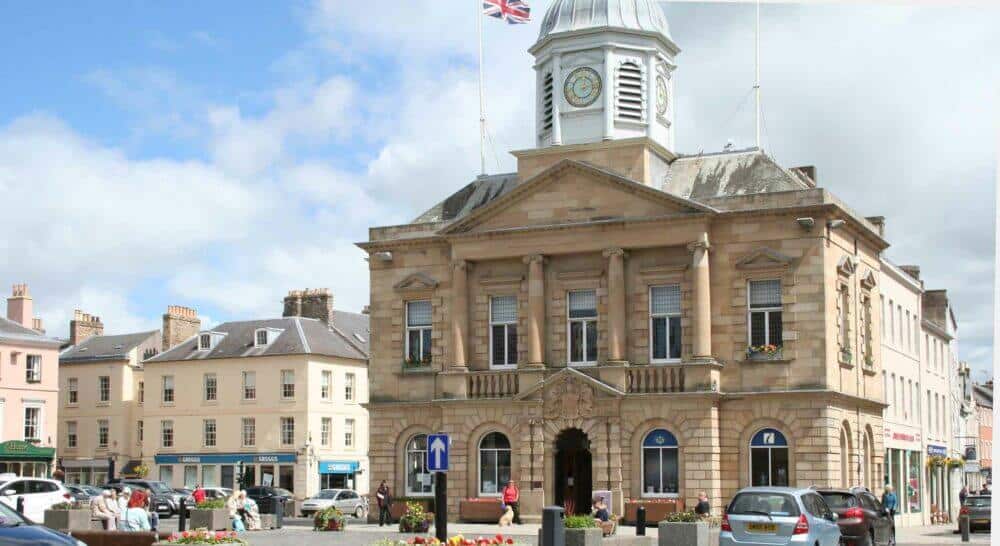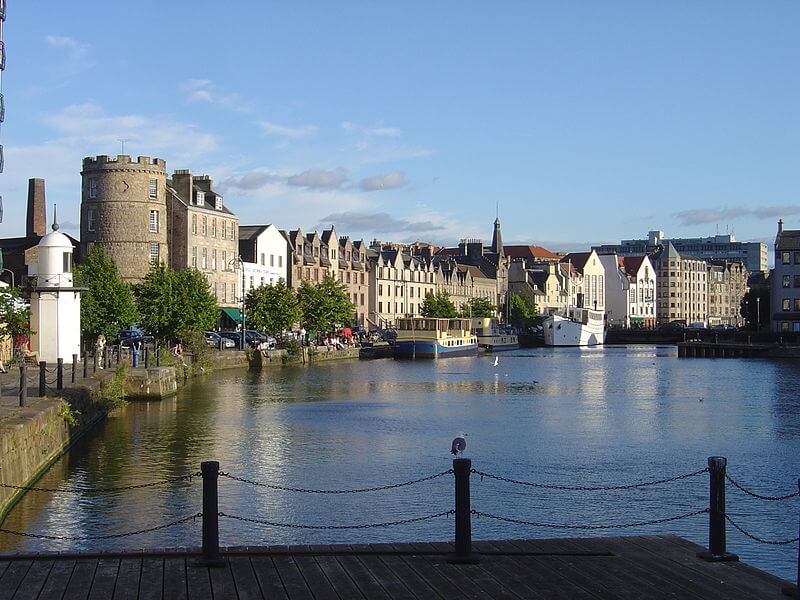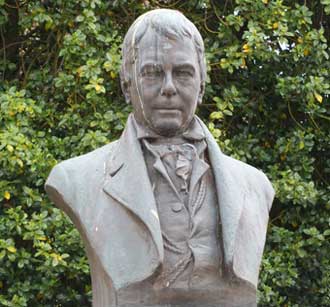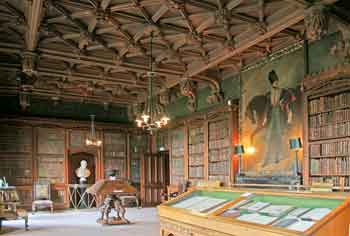Discover the forgotten story of Napoleonic prisoners of war in the Scottish Borders.
Find out where these soldiers lived, how they spent their time, and the impact they had on local communities during a fascinating period in European history.

Kelso Today
As English prisons filled, towns in the Scottish Borders hosted Napoleonic prisoners of war.
At the end of the 18th century, the Scottish Borders was a rural backwater where ordinary people went about their business, rarely disturbed by events elsewhere.
War in Europe and the arrival of Emperor Napoleon Bonaparte’s soldiers brought change to the region, not death and misery, but new traditions, culture, and for some, unexpected friendship.
By the year 1808, France under the leadership of Napoleon had achieved military control in much of Continental Europe after victories over Austria, Prussia and Russia.
Britain, as an island nation, had withstood the ever-increasing military power of the French, foiling their invasion plans after Admiral Lord Nelson had destroyed much of their fleet at the Battle of Trafalgar in 1805.
The tide in Europe began slowly to turn after the Spanish rose and fought back against the Emperor, Britain now had a new ally prompting them to send an expeditionary force to the Iberian Peninsula.
Peninsular War
The ensuing Peninsular War, (1808-1814) part of the greater European conflict, created thousands of prisoners of war many of whom were transported across the Channel to England.
At one point around 35,000 were crammed into rotting and unsanitary hulks moored around the English south coast.
As the hulks overflowed the prisoners were moved on to large prisons at Normans Cross, Liverpool and Dartmoor before some moved again north to depots in Scotland.
It was the remnants of a defeated army that started arriving, towards the end of 1810 and throughout the following year in the Edinburgh Port of Leith.
Some went north to Perth while others were marched south to the Scottish Borders to be dispersed throughout the region.

They included in the freezing winter of 1811, a large contingent of French officers and enlisted men from a dozen different nations.
German, Dutch, Belgian, Spanish, Russians and Swiss together with a scattering from the United States, Canada, Latin America, West Africa and the Middle East trooped wearily south.
Adelbert J Doisy
They stopped en route at the small town of Penicuik where 2000 soldiers and sailors were confined in the austere Valleyfield Mill.
The officers continued along the road to the Borders, among them one Sub-Lieutenant Adelbert J Doisy taken from the French flagship Vasco de Gama.
His first view of Selkirk came as a shock to the young Parisian, used to the bustling and vibrant French capital.
He was now faced with captivity in a remote, unsophisticated, rural setting where “Very few of the houses were covered in slate and thatch predominated.”
However, he echoed the feelings of his fellow officers when he said, “We were too French to permit our feelings to depress us.”
Adelbert Doisy has left us with a remarkable record of the next two and a half years that he and his comrades spent in Selkirk,
Other records also exist that detail the lives of those who came to other towns and villages in the Scottish Borders.

The residents of Selkirk were wary at first for as ‘paroled officers’ there were no prison camps or barbed wire.
The foreign military men were to be housed as ‘guests’.
The parole form of 1797, made it clear that they (the prisoners) “had the liberty to walk on the great turnpike road within the distance of one mile from the extremities of the town.
However, they must not go into any field or crossroad, nor be absent from his lodging after 5 p.m. during the six winter months from October 1 to March 31, nor after 8 o’clock in the summer months…”
The parole form had other conditions but compared to the enlisted men their conditions were much easier.
Paid half a guinea a day
Once the locals found the prisoners ‘were paying cash’ for their accommodation they were delighted to have them.
As commissioned officers, they were paid half a guinea a day by the British government and many also had private means. Consequently, during their stay they spent around £19,500, a colossal sum at that time.
They were not expected to work and initially, the long days stretched in front of them but they were determined not to be bored and were constantly looking at new ways to pass the time.
Doisy’s diary explains. “One of our number taken in Martinique procured a billiard table from Edinburgh. He had private means and furnished a very good café where only Frenchmen were allowed.
In typical Gallic style, music and theatre followed. Instruments were hired in Edinburgh and players were found to start a small orchestra.
They collected £100 among themselves and rented a building in town which they turned into a small theatre. Performances took place every Wednesday and Saturday.
Residents of other Border towns were also treated to weekly shows from budding thespians. Like their fellow prisoners of war in Selkirk, officers held in Kelso also rented a building, a derelict seed store in the town’s Horsemarket.
Half a century before it had been a theatre where many of the great travelling actors of the day had played to full houses.
On some special occasions when the Duke and Duchess of Roxburghe attended a performance, the streets were covered with crimson cloth in their honour.
We know that because dressing room space was limited many of the actors preferred to get into costume before going to the theatre.
The youth of Kelso relishing the chance to ridicule them used to lie in wait to, “Get some amusements out of their grotesque attires.” One can only imagine some of their comments.
Sir Walter Scott
Adelbert Doisy and a small group of fellow officers found themselves at Abbotsford House, near Melrose, one February evening in 1813. Their host was Sir Walter Scott, then plain Mr Scott, the Sheriff of Selkirkshire.

They found Scott to be, “A gentleman full of cordiality and gaiety, receiving his guests in a fashion as amiable as it was delicate.” A number of other visits followed, it was a welcome relief for the Frenchmen.
Ten years later Scott published a book that produced a furious outcry from Doisy and his fellow prisoners (by now repatriated) who had attended the gathering many years before.
“We little suspected that our host was gathering material for a work published under the title of the Life of Napoleone.
Sir Walter Scott distorted each incident told by us with malevolent insinuations. It remains a stain on the name of the illustrious author.”
The Life of Napoleon
The Life of Napoleon which ran to nine volumes and over one million words was a worldwide success for Scott.
Despite this there were criticisms of the work.
Although Scott carried out considerable research both in London and Paris the meeting with the prisoners of war at Abbotsford left a bitter taste in their mouths.
Throughout the region, a number of other ways were found to pass the time and earn a little extra money.
An advert appeared in the Kelso Mail announcing that, “Mr Brement, Professor of Belles Lettres and French prisoner of war, respectfully informs the ladies and gentlemen of Kelso that he teaches the French and Latin languages.” No terms were stated.
French and German lessons were also offered in Hawick and occasionally a small sum was charged for a dramatic or musical recital in their ‘clubroom’ which also housed a billiard table, the first ever seen in the town.
Gallic passion
Food and drink have long been a Gallic passion and frogs are considered a delicacy. During their years of captivity, the French military men introduced many a Borders family to the doubtful pleasure of the little green amphibian cooked in a fricassee and served at the dinner table.
Related article
A nice story from Hawick tells us of an officer’s introduction to the ‘hot toddy’ a wonderful drink made from whisky, sugar or honey and hot water.
“The farmers in those days freely partook of toddy in the long winter nights… and introduced this Scotch drink to their alien acquaintances.”
One of these French ‘gentlemen’ clearly under the influence of the toddy was perspiring so freely he remarked to his host in broken English, “Dese be melting moments.”
The Hawick people, both those in authority and the ordinary man and woman, were uniformly praised by the French prisoners.
A record of one conversation between a French infantry captain and a local trader paints a picture of a harmonious rather than an acrimonious relationship between prisoner and resident.
“The weather” said the Scotsman, “must be very uncomfortable to you who have been accustomed to a more genial climate.”
“It is the Devil’s weather” replied the Frenchman but you have the heaven country for all that, you have the cold, the snow, the frozen water and the sober dress but you have a grand constitution and the manners and equality that we French fight for so long.
“I see in your street the priest, the shoemaker, the banker and the baker all meet together, be companions and happy.”
A nation of naked savages
The conversation turned to the officer’s experience as a prisoner in England before being sent north. “The English tell me that the Scots were a nation of naked savages. It was a lie, it is the English that are savages.”
Escapes were relatively rare. However, a reward of one guinea was offered for the capture of J H Parnagan an ensign of the French vessel Hautpoul and a local newspaper quaintly announced that Lieutenant C Rossignol “took his departure.” Neither it seems were ever recaptured.
One young officer took the hard way out. In September 1812 Louis Journeil a lieutenant from the 27th Regiment swallowed a quantity of sulphuric acid. His agony was heard a long way off. Letters he left behind tell us of a lonely young man desperately missing his home and family.
By the beginning of 1814, the war was going badly for the Emperor.
Germany was fighting hard to push out the French and regain its liberty and consequently Britain encouraged prisoners of German origin to return home and fight for their country.
Accordingly, the eleven native Germans who had been paroled in the small village of Lauder were given £5 by the Transport Board to return home and fight this time for their country against the French.
In March 1814, Paris fell and Napoleon went into exile on the Mediterranean Island of Elba.
For the Frenchmen of Selkirk, it was time to return to their families and a ship duly arrived at Berwick Upon Tweed to take them home on 26 April 1814. Within a few weeks, others too began to leave
There was one last thing for the Selkirk prisoners to do before they left. They had spent over £120 on fitting out the theatre and decided to hold an auction to recoup some of their money.
The local residents knowing that they could not take anything with them bid only a miserly £6.
The prisoners, now free to leave had the last laugh. “Some of us were supplied with steel, flint and tinder and at a pre-arranged signal set fire…”
Napoleon’s exile on Elba didn’t last long for within the year he had escaped and once again his armies were on the march.
Battle of Waterloo
In 1815, the Battle of Waterloo finally brought an end to the conflict in Europe and the news was received throughout the Borders with great joy.
John Stirling, a young boy who later became Provost of Peebles remembered the Fly, the coach which ran between Peebles and Edinburgh, and “gaily decorated with flags” for the occasion bringing the news that the war was over. “The church bells rang throughout the town.”
After his defeat at Waterloo, Napoleon Bonaparte fled to Paris where he abdicated on 22 June 1815. He finally surrendered to a British naval captain aboard the warship Bellerophon on 15 July.
He was subsequently banished by the British Government to the Island of St Helena where he died on 5 May 1821.
“A Kelso resident later remarked poignantly that the time of their (prisoners of war) stay, “Was the gayest that Kelso had since fatal Flodden.”
That sentiment was echoed around the Borders which was never quite the same again.
More information about Sir Walter Scott and his Abbotsford home
For information on opening hours, cost of entry and other tips to help you plan your visit, go to the Abbotsford website.